Today, we live in a world where there is widespread acceptance of the powerful impact meditation can have, both for health and self-actualization. But this wasn’t always the case. In the mid-20th century, there was little scientific research on meditation. What brought about this change in how people think about human development? And is the scientific measurement of higher states of consciousness really possible?
To answer these questions, we need to go back to the early 1970s, when a group of young scientists and academics from around the world set out on a revolutionary quest.
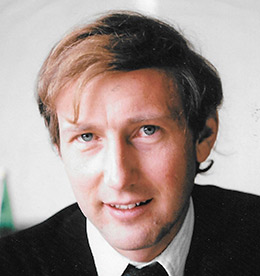
David Orme-Johnson, Ph.D., in the 1970s
I was fortunate to be part of this group. We all practiced the Transcendental Meditation (TM) technique, and we were keen to research the new state of consciousness we were experiencing during TM. So we sought to create a scientific portrait of TM and Transcendental Consciousness, and its myriad benefits.
Working with Maharishi Mahesh Yogi, the Founder of TM, we established two universities. These institutions are dedicated to the experiential, theoretical, and empirical study of enlightenment and its relationship to all fields of academic study: Maharishi International University (MIU, now Maharishi University of Management) and Maharishi European Research University (MERU).
In this continuing series, I’ll tell the inside story of this rapidly unfolding science of enlightenment, beginning where I left off in part 1, A Scientist’s Quest for Enlightenment.
How an Engineer from Greece Persuaded the Stanford Research Institute to Study TM
Even before 1973, when I published my research showing that Transcendental Meditation increases autonomic stability,1 word quickly spread around the meditator world. Soon I was corresponding with others doing TM research. The hub connecting all the TM researchers was a charismatic engineer from Greece, Dr. Demetri Kanellakos.
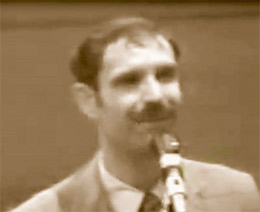
Demetri Kanellakos, Ph.D., of the Stanford Research Institute (c. 1973 video)
Demetri had risen from a childhood in wartime Greece. Since the occupying powers of Germany, Italy, and Bulgaria had taken over all the schools, Demetri’s formal education was interrupted for four years. Nevertheless, he went on to earn a Ph.D. in electrical engineering and to hold a position at the Stanford Research Institute (SRI), one of the most prestigious research institutions in the world.
Soon after Demetri learned TM in 1969, he enthusiastically started collecting research on it. He knew from his own TM practice that he was experiencing something new and different during his meditation, and here was the evidence. He wanted to extend this research to Stanford—which proved more difficult than he expected.
Dr. Demetri Kanellakos… knew from his own TM practice that he was experiencing something new and different during his meditation, and here was the evidence.
Groundbreaking Data on the 4th State of Consciousness
To convince his colleagues, Demetri gathered the initial studies that had been done at the time. These included mine, which would be published in Psychosomatic Medicine, and especially Dr. Keith Wallace’s doctoral dissertation at UCLA. Keith’s groundbreaking data indicated that TM produces a fourth major state of consciousness, Transcendental Consciousness. He published this research in the top scientific journals, including Science,2 the American Journal of Physiology,3 and Scientific American.4
But the idea of a fourth state of consciousness definitely raised some eyebrows in the scientific world and furrowed others. When Demetri proposed to the senior scientists of the SRI psychology department that SRI do a pilot study on this fourth state of consciousness, they laughed at him. “Demetri, you don’t know anything about psychology,” they said. “Go back to your engineering.”
Dr. Keith Wallace’s… groundbreaking data indicated that TM produces a fourth major state of consciousness, Transcendental Consciousness.
This was the heyday of a narrow interpretation of Behaviorism, which did not even believe that the mind could affect the body—much less that there could exist a higher fourth state of Transcendental Consciousness! Demetri was almost kicked out of their offices, he recalls.

Keith Wallace, Ph.D., Founding President of Maharishi International University, now MUM
But Demetri persisted, armed with Keith’s research. Keith’s data showed that TM produced a state of Restful Alertness, with a physiological pattern different from waking, deep sleep, and dreaming—on not just a few but on ten parameters: EEG (electroencephalography, which measures brain activity), eye movements, muscle tension, body motility, oxygen consumption, body temperature, cardiac output, blood gases, heart rate, and blood pressure.
This pattern of changes was in the opposite direction of that of stress, and the implications for health benefits were enormous. Medicine was just beginning to recognize that stress impacts every area of health, and here was an effective antidote that could be added to anyone’s daily routine. Pilot studies began to pour in on how TM reduced blood pressure and drug, alcohol, and cigarette abuse.
What was special about TM was the combination of deep rest and the high level of brain integration, which reflected a unique state of “restful alertness.” But I’m jumping ahead of myself.
Medicine was just beginning to recognize that stress impacts every area of health, and here was an effective antidote that could be added to anyone’s daily routine.
The Far-Reaching Impact of the Science and Stanford Studies
In the end, the SRI pilot study did go forward—but not solely on the basis of a rational evaluation of the evidence by the scientists. The final deciding factor turned out to be the testimony by the wife of an SRI higher-up. She had learned TM and experienced dramatic positive benefits!
Together with Keith’s seminal papers, the SRI study on TM would lay a firm foundation for the pioneering research to come. Keith had studied TM in experienced meditators, while the SRI investigation studied new meditators who were not self-selected to learn TM. This added further authority to the research, because it showed that the effects of TM were not due to any preexisting conditions—that is, not due to any inclination of the research subjects to learn meditation.
After just three months, the SRI conclusions were clear:
- Anyone can learn TM and experience positive changes, such as changes in EEG and physiological parameters, reduced anxiety and depression, and improved sense of well-being.
- In as little as three months, measurements can be collected to show significant changes, including those just listed.
- TM is a researchable topic with many applications, such as self-improvement for personal performance, heart disease, reduction of drug abuse, reduction in the need for prescription drugs like valium, sleeping pills, and so on.
The SRI study on TM would lay a firm foundation for the pioneering research to come… [It] studied new meditators who were not self-selected to learn TM.
Maharishi Names Two Scientists of the Age of Enlightenment
As a result of the SRI study and Keith’s research, graduate students in universities around the world were allowed to do research on TM. Their proposals were validated on two fronts:
- Keith’s papers in Science, Scientific American, and other journals showed that TM produces a fourth state of consciousness that can be studied.
- Demetri’s letters of endorsement from the Stanford Research Institute verified that TM results are a researchable topic, producing effects in a reasonably short time—just a few months.
To commemorate Demetri and Keith’s pivotal roles in the scientific quest for enlightenment, Maharishi gave each an honorific title. Given the inroads Demetri made at Stanford, he was “The First Scientist Who Introduced Consciousness to Science.”
Keith, who had shown the physiological reality of Transcendental Consciousness, the foundation for the growth of enlightenment, was “The First Scientist of the Age of Enlightenment.”
The Logical Existence of the 4th State of Consciousness
Transcendental Consciousness is held to be the key to gaining enlightenment, according to the Upanishads in the Vedic tradition of India5 and in every major culture of the world.6 But as Keith and Demetri found, its existence was neither known nor accepted by the scientific community.

Paul Levine, Ph.D., theoretical physicist
One of the young scientists working with Maharishi devised an ingenious thought experiment to logically lead people to the possibility that a fourth state of consciousness might exist.
Dr. Paul Levine had attended MIT and had a Ph.D. in theoretical physics from Caltech, the California Institute of Technology. He was an enthusiastic meditator who lectured in the Palo Alto area with Demetri in the early 1970s.
Paul would present his audience with an empty grid with two familiar dimensions: Awareness and Thoughts. Then he would ask, “What state of consciousness would have Awareness and Thoughts?” Waking, they’d say, and he’d put a W in the corresponding box.
“What about No Thought and No Awareness?” Sleep. An S would go into the second box. “Thoughts but No Awareness?” A D for Dreaming in the third box.
That left one empty box for Awareness but No Thoughts. What could that possibly be?
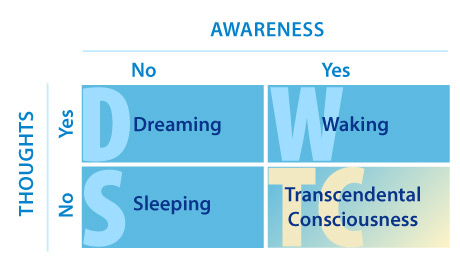
Is there a 4th state of consciousness? Dr. Levine’s thought experiment is still used in research papers today.
This would lead to a discussion of Transcendental Consciousness or TC, the fourth state of consciousness. In TC, the mind is awake and alert but there are no thoughts. Paul would present Keith’s research showing that this state is physiologically distinct from waking, dreaming, and sleep.
Demetri frequently used this table as well, and he passed it on to TM teachers around the world. It is still used today in scientific journal articles to explain Transcendental Consciousness. To name just one, see Dr. Fred Travis, “Transcendental Experiences During Meditation Practice,” in Advances in Meditation Research: Neuroscience and Clinical Applications (2014).7
Nobel Laureates Meet with Maharishi
In 1972, under Maharishi’s guidance, we scientists and other academics created Maharishi International University (MIU) in Santa Barbara, California (now Maharishi University of Management in Fairfield, Iowa), and in 1973, Maharishi European Research University (MERU) in Switzerland. I became director of research and vice-chancellor of MERU and chairman of the MIU (MUM) Psychology Department.
MERU had its base on Lake Lucerne in the Swiss Alps, in the grand old Hotel Seeblick in the town of Weggis. We set up a psychophysiology laboratory, and Maharishi regularly met with us and visiting scientists to discuss the ongoing research.
MERU also held numerous conferences with luminaries from many disciplines. These included several Nobel Laureates, such as quantum physicist Dr. Brian Josephson. In this video clip from 1975, Dr. Keith Wallace introduces Dr. Josephson, who speaks briefly about quantum physics and TM, and Maharishi comments.
The Aha! Moment When Maharishi Identified Synchrony as Key
Another visitor was an EEG researcher from Paris, Dr. Jean-Paul Banquet. He had begun research on TM while he was at the Stanley Cobb Laboratories for Psychiatric Research at Massachusetts General Hospital and the Harvard Medical School. Jean-Paul was the quintessential Frenchman, with a charming accent, wild eyes, and unruly hair, who literally lived in his laboratory, sleeping next to the EEG machines.
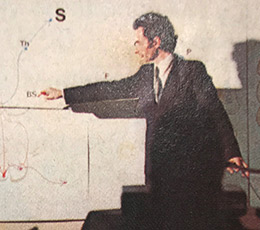
Jean-Paul Banquet, Ph.D., EEG researcher
While showing us his EEG results, Jean-Paul began describing how during TM, slow alpha (8-9 Hz) waves became highly synchronous between the right and left cerebral hemispheres and between the front and back of the brain.8
Maharishi, who seemed to be only casually listening, writing on a pad as he often did during such meetings, suddenly alerted everyone to the word synchrony. A discussion quickly ensued about its meaning.
Physiologically, global EEG alpha wave synchrony meant that all the different areas of the brain were working together, producing the same shape and frequency of brain waves. This implied increased orderliness of brain functioning, clearer thinking, improved mind-body coordination, better memory, increased creativity, and more.
Although none of this had been empirically demonstrated at the time, all of it is now recognized by the EEG community—as we’ll see in the upcoming parts of this story.
Ancient Vedic Wisdom, Modern Science, and the Vacuum State
During these exploratory conversations between scientists and Maharishi, profound connections often clicked between the deepest discoveries of modern science and the wisdom of ancient Vedic knowledge.
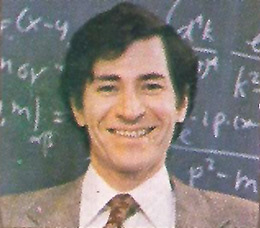
Lawrence Domash, Ph.D., laser physicist and Founding Chancellor of MERU
Maharishi was always especially interested to hear what the physicists had to say, particularly laser physicist Dr. Lawrence Domash. Trained at Princeton’s Institute for Advanced Studies (of Albert Einstein fame), with a post-doc at Harvard, Larry was the chancellor of MERU.
Larry pointed out that the most fundamental quantum mechanical level of natural law is its state of least excitation, the vacuum state, in which everything is synchronous, or coherent.9
Maharishi explained that this was a clear parallel to the descriptions of Transcendental Consciousness in the Vedic literature. In The Yoga Sutras of Patanjali, for example, Yoga means the union of the individual mind with its transcendental basis, or Transcendental Consciousness. As one sutra or aphorism explains, Yoga is complete settling of the activity of the mind (yogas-citta-vrtti-nirodhah).10
The atmosphere in the room seemed to glow, combining crystal clear intellectual clarity with an all-pervading bliss. We knew we were living an important moment in history.
Now we had connected the intellectual understanding of Transcendental Consciousness to our personal experience during TM and to something measurable—the EEG of that experience.
The atmosphere in the room seemed to glow, combining crystal clear intellectual clarity with an all-pervading bliss. We knew we were living an important moment in history. But we were also aware that we were a long way from convincing the general scientific world.
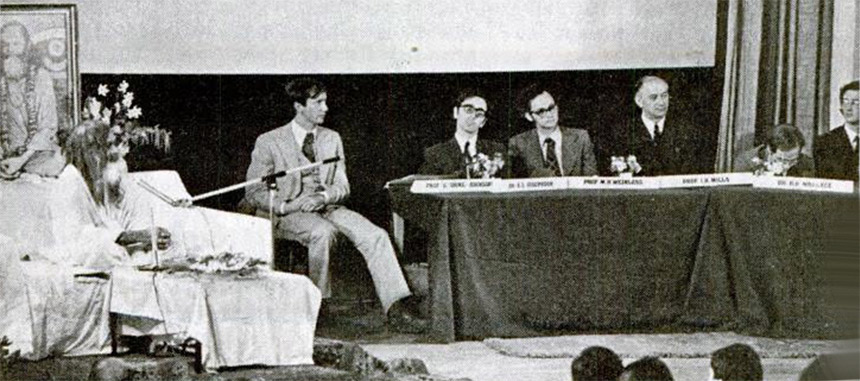
At a 1974 symposium at the University of Cambridge, Maharishi Mahesh Yogi met with (l. to r.) Dr. David Orme-Johnson, Dr. Brian Josephson (Nobel Laureate), Dr. Michael Weinless (professor of mathematics), Dr. Ivor Mills (professor of medicine), Dr. Keith Wallace, and Dr. Byron Rigby (professor of psychiatry). Photo from New Scientist 23 May 1974.
To Be Continued…
In the next issue of Enjoy TM News, we’ll see how TM researchers demonstrated the significance of global brain synchrony to the scientific community. As Maharishi predicted, brainwave coherence during TM is the key to optimal brain functioning and to fully actualizing our creative and intellectual potential.
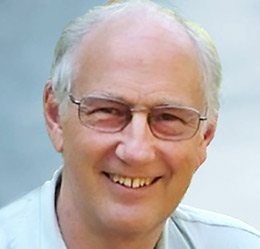
Dr. David Orme-Johnson is one of the principal researchers on the Transcendental Meditation technique worldwide, with over 100 publications in peer-reviewed journals. He served as Director of Research of the International Center for Scientific Research, and Vice Chancellor of Maharishi European Research University.
At Maharishi University of Management, Dr. Orme-Johnson was Head of the Psychology Department, Director of the Doctoral Program in Psychology, Co-Director of the Ph.D. program in the Physiology of Human Consciousness, and Dean of Research.
Dr. Orme-Johnson has presented TM research in more than 56 countries around the world, for scientific conferences, high-ranking government officials, and the United Nations.
References
1. Orme-Johnson DW. Autonomic stability and Transcendental Meditation. Psychosomatic Medicine. 1973;35:341-9.
2. Wallace RK. Physiological effects of Transcendental Meditation. Science. 1970;167:1751–4.
3. Wallace RK, Benson H, Wilson AF. A wakeful hypometabolic physiologic state. American Journal of Physiology. 1971;221:795-9.
4. Wallace RK. The Physiology of Meditation. Scientific American. 1972;226:84-90.
5. Katz V, Egenes T. The Upanishads: with an Introduction by the Translators. New York, NY: Penguin Random House; 2015.
6. Pearson C. Supreme Awakening: Experiences of Higher States of Consciousness Across Time and Across the World. Fairfield, Iowa 52557 USA: Maharishi University of Management Press; 2012.
7. Travis F. Transcendental experiences during meditation practice. Annals of the New York Academy of Sciences. 2014;1307(Advances in Meditation Research: Neuroscience and Clinical Applications ):1-8.
8. Banquet JP. Spectral analysis of EEG in meditation. Electroencephalography and Clinical Neurophysiology. 1973;35:143-51.
9. Domash L. The Transcendental Meditation technique and quantum physics: Is pure consciousness a macroscopic quantum state in the brain? In: Orme-Johnson DW, Farrow JT, editors. Scientific Research on the Transcendental Meditation Program: Collected Papers, Volume I. Livingston manor, New York: Maharishi European Research University Press; 1977. p. 652-70.
10. Egenes T. Maharishi Patañjali Yoga Sūtra. First ed. Fairfield, Iowa: 1st World Publishing; 2010, pp. 11-12.


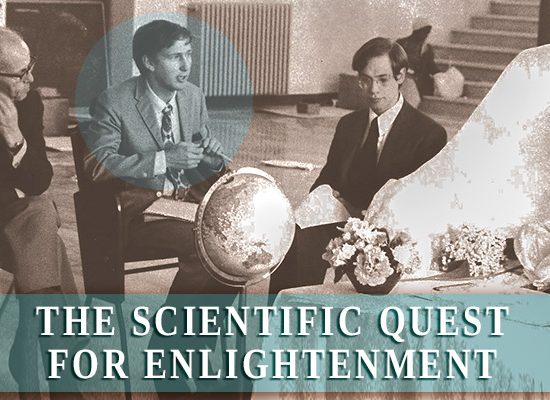
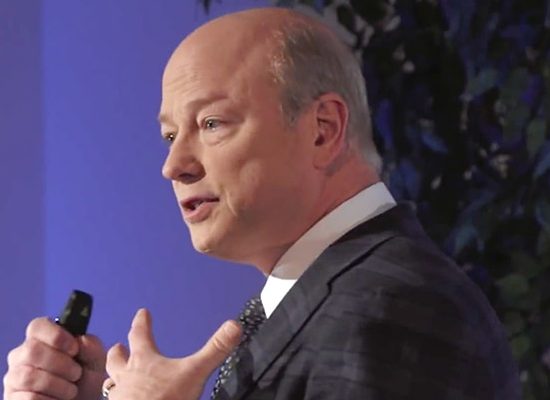
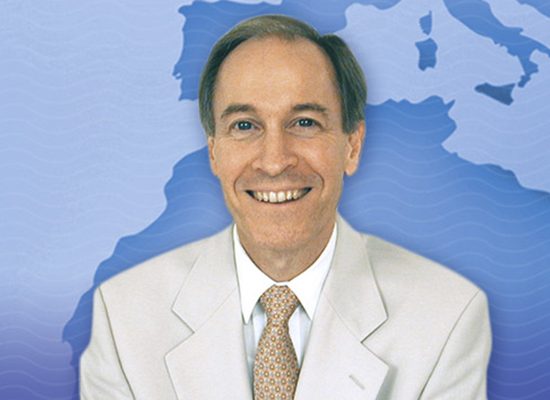
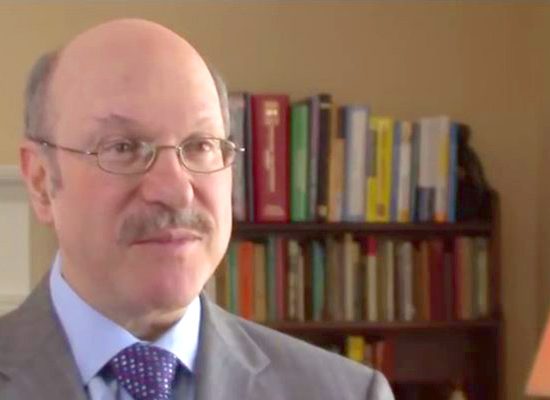
This is outstanding, David, not only as a way to document the genesis of scientific research in the field of consciousness and all the challenges to gaining acceptance that were a part of that pioneering effort, but to also show how Maharishi University and its team of scientists have led the way to these important discoveries. The motivation and rigor that has resulted in hundreds of peer reviewed and published studies is a remarkable testament to you and your colleague’s efforts, which on the strength of new VA-funded PTSD and NIH-funded heart research, shows no sign of slowing down.
The article evoked the thrilling atmosphere of brilliant minds at the Colloques de Cordoue in 1979. I look forward to reading something of that calibre on the Maharishi Effect.
Thank you Dr. David Orme-Johnson for this lovely article and insight into the formative years of our beloved university. We are all beneficiaries of that great Maharishi insight that knew the path that needed to be forged to mainstream TM, and also the sattwa that allowed young, hungry, and brilliant minds to coalesce around the noble quest of the world’s Enlightenment. JAI GURU DEV.
Obviously the most important scientific discovery in Western history.
Such a beautiful article. I’ve always been struck by the courage of the young scientists who proposed what was at the time a very radical new paradigm to an entrenched establishment. But then “satyam evam jayate.” Thank you and the others for all your precious work – and for the heads-up on Rhoda’s book. We took our teacher training in Majorca in 1971 and now I’m doing the MA in MVS online. Jai Guru Dev!
This is great. Really puts things in context and celebrates the bright scientists who could see the forest and the trees.
Thank you, David! You brought back many fond memories… I was “on the boat” on Jan. 12th 1975, and spent that year on international staff — where I met most of the scientists mentioned in this article.
I remember that 1974 event at Cambridge. It was not only a once in a lifetime meeting, but also the combination of those minds with one who is free in himself. It seemed as if the gods had come down altogether just to listen.
David….thank you for the groundbreaking work you have done and continue to do over all these years. Your devotion and dedication to using science to objectively validate the subjective experience for all of us who have diligently practiced TM and the TM Sidhis illumines the direct relationship between higher states of consciousness and daily practice…as well as validating what the Vedic Rishis have said for literally thousands of years. Thank you for your devotion to the Vedic Masters, Maharishi foremost among them.
David,
Your whole life is swelling up to the surface. I do not have any photos, but I will place some comments into the mix for part II in coming weeks.
Russell, don’t discount your own contributions as one of the Houston area’s crown jewels of TM research! Would be nice to have some links to your works here, as well, for broader appreciation.
I remember working under David’s supervision, attaching electrodes to measure EEG to meditators in Switzerland. Marvelous times, soaking in that knowledge.
I’ve been studying, what I call pneuo-psycho-physiological phenomenon since 1959. I’m so delighted to have finally discovered this material. Thanks for your persistence in this important pursuit.
Thank you David. It brings back fond memories. I was on Demetri’s teacher training course in Majorca in 1971. And of course I vividly remember the work you and Keith did in those early days. The whole world is forever blessed by those precious times.
Great article. Great research. Profound new understanding and a very precise and Vedic way of bringing the methods of Shankara, Patanjali, and Guru Dev (Saraswati Brahmananda, Maharishi’s teacher), and all they spoke of to the modern realm. I have been meditating since 1976. Having addressed a retreat audience recently with a presentation entitled “TM, Magic & Me” (Westchester, NY, May 2016), I not only elucidated the effects of Transcendental Consciousness, but gave practical advice on practical experience. The talk was scheduled for 50 minutes. Questions added another 30. My point is that the understanding by meditators of the blissful long road ahead may sometimes be fraught with confronting avidya (darkness, ignorance), but with the joy that the Gita offers to “be without the gunas.” In today’s parlance, it means to remember our peace and use the development of peaceful consciousness to connect to the bigger, magical picture.
Great article!
Thank you, David. You continue to enlighten and inspire. So well written and presented.
Former MIU Public Affairs Director and colleague, Patriczia Petrus (aka Patty Schneider)
What a great review. So good to remember it all and keep a record… Thank you! Definitely history in the making… and continuing…
I too was a graduate student at Maharishi International University during the good old days. I started in 1973 in Santa Barbara, continuing in Interlaken, Switzerland, and Fairfield, Iowa. I received my MA in Interdisciplinary Studies at MIU. Then I received my MA in the Science of Creative Intelligence at MERU. I then pursued the Masters in Higher Educational Development at MIU in Fairfield, Iowa. I loved working with all these professors and learned so much from them. Others you did not mention include Jonathan Shear, Ph.D. Philosophy, and Michael Weinless, Ph.D. Math. I am sure that there were others whose names I don’t recall right now. We were all on the cutting edge of Knowledge, Consciousness, and Experience, constantly inspired by Maharishi’s profound knowledge. I moved to San Diego to join the Vedic Atom with the encouragement of Maharishi. I stayed in San Diego, married, and raised two children. Thank you for reminding me of the “Glory Days.”
Dear Janet, In this context, Maharishi once said, “there will be many books,” which I took to mean many views of Maharishi’s work from our different specialties and perspectives. Mine is about the laboratory guys, but in my book I will also summarize the work of the brilliant theoretical guys you mention, and others. Have you seen Rhoda’s book? She gives a lively narrative of our 47 years with the movement, with a cast of many faculty characters. http://www.RhodaTheWriter.com/memoirs
I just received Rhoda’s book and I look forward to reading it. Thank you for all the contributions you have made over the years, and keep up the good work!
Janet
Wow, what a well-written article about a beautiful history. Many of us lived though this history as meditators and then Sidhas, and often as students at Maharishi University. As only someone on the sidelines, it still makes me proud to see it written up like this to have known many of the ground-breaking scientists, doctors, and researchers as it happened, to see our own experiences verified with the new research, and to marvel at Maharishi’s genius for making it all possible. The fact that TM is not a brand name but a scientific discovery about human potential would never have been understood without these great heroes, including yourself, Dr. Orme-Johnson. Thank you very much not only for your own research work but also for this wonderful article.
Thank you Sharalyn! The story is continuing, and the research on enlightenment is even more profound, with the work of Drs. Lynne Mason, Fred Travis, and others who I will be telling about in future articles. Stay tuned!
I feel very fortunate to have been a student at M.I.U. in those early days that Dr. Orme-Johnson describes here. I attended between 1974-81, and vividly recall the electricity in the atmosphere as more and more of the world’s collective consciousness opened up to the idea and power of meditation as a means to improve people’s daily lives. I saw each of those researchers mentioned in the article speak about their findings, and even though I was a relative youngster, I too knew this was some real pioneering stuff going on. I’m grateful for each meditation these past 44 years, and I deeply appreciate Dr. Orme-Johnson’s providing an opportunity to “go down Memory Lane” with his nicely written historic background of the research on TM through the years. May the wave of meditation-lovers continue to grow and our world be blessed with ever-expanding consciousness! 🙂
Thank you Willy! We were so lucky to have students like you.
This is so wonderful!
Thanks Lynne. I will also be telling the story of your groundbreaking research on Cosmic Consciousness! You are a heroine, taking women’s liberation and human liberation to its Absolute level in the infinite field of Bliss consciousness, the transcendent Self of all beings– one of the greatest achievements in the history of science, in my opinion.